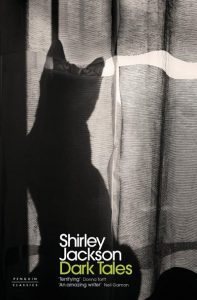
‘Dark Tales’ book review
By Ethan Gibson, Columnist
4.5/5
Shirley Jackson (1916–1965) is best known for her novel The Haunting of Hill House and her infamous short story “The Lottery.” Both are classics of literary horror and demonstrate Jackson’s talent for creating unsettling stories of brilliant terror and mystery. Dark Tales, a new collection of her stories from Penguin Classics, presents a thrilling assortment of short stories about the darkness lurking within average American neighborhoods, forests, and country manors. Each story in Dark Tales imagines—without melodrama or hyperbole—the truly scary potential for everyday life to quickly become unrecognizable and hostile, without explanation.
Certain stories in the collection explore the fragility of identity—that aspect of ourselves so vitally intimate that its disruption is always uniquely unsettling. Both “Louisa, Please Come Home” and “The Beautiful Stranger” conjure chilling stories about identity. In dramatizing drastic identity changes, Jackson taps into a deep well of haunting scenarios. As the familiar becomes alien and the known becomes unknowable, ordinary lives in Jackson’s stories are shattered, transfigured, or gradually dissolve until nothing is as it once seemed.
When the supernatural appears in these stories, it does so in ways that are subtle yet uncompromising. In “The Man in the Woods,” a young man strolling through an innocuous wood finds himself standing before a stone house. His trepidation is softened when the women inside graciously invite him into their warm kitchen. Soon another man appears, one who seems strange but not obviously dangerous. Indeed, there is no explicit danger anywhere in the story, only the suggestion of peril. The story’s sense of unease waxes and wanes as the young man rationally appraises his situation—until the abrupt end compels the reader to go back, to search frantically for clues, and to find, disappointed, that no answer to this story exists. All one finds is the same irresistible mystery present in each eerie detail of a story that, like many others in this collection, persists in the mind long after being read.
Some of the most haunting stories in Dark Tales are those devoid of overt supernatural elements. Instead, nightmare-logic and unreliable perception often propel the descent of an initially tame story into a tapestry of despair, madness, isolation, and persecution—all without hope of explanation. “The Bus” provokes real sympathy for its protagonist in its first pages: An elderly woman gets off her bus at the wrong stop and finds herself stranded in unfamiliar territory during a storm. As headlights approach the vulnerable old woman, the reader feels profound apprehension but cannot anticipate where the tale will lead. Much of Jackson’s writing is similarly propelled by gripping mysteries, making her fiction incredibly readable.
It isn’t simply fear of the unknown that characterizes Jackson’s stories. Her gift for horror is most apparent when the unknown is thought to have been escaped, only for the familiar to prove the real source of terror. The gradually overwhelming moods of dread, unease, and uncanniness found in Jackson’s stories—the “quiet, cumulative shudders” Dorothy Parker celebrated in Jackson’s work—invoke fear in the reader, but also the unique feelings of satisfaction and admiration only inspired by great horror fiction. It’s hard to read Jackson’s work and still doubt the merit of horror writing.
Dark Tales is a delightful collection for fans of Jackson, and an excellent introduction to her talents for newcomers. Most importantly, this newly-published collection reasserts the relevancy and immortal power of Jackson’s fiction.


